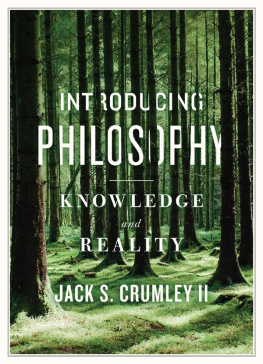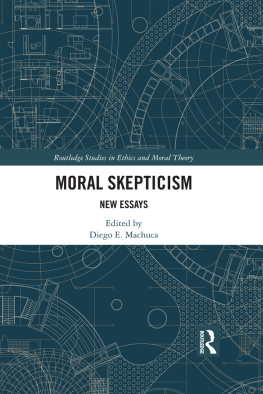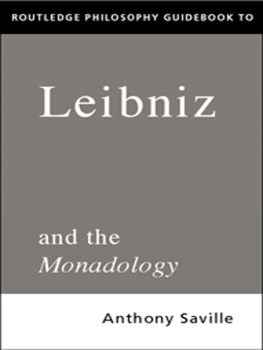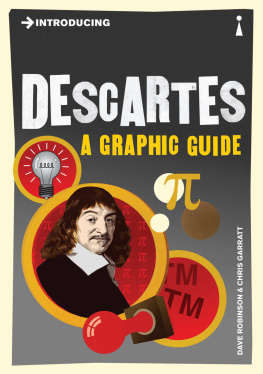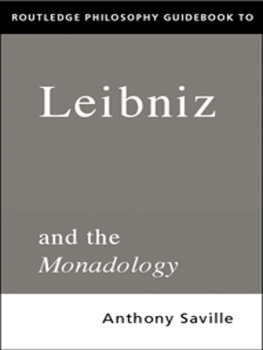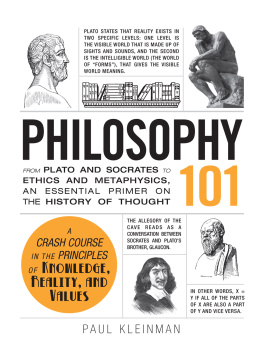INTRODUCING
PHILOSOPHY
KNOWLEDGE
and
REALITY
JACK S. CRUMLEY II

broadview press
BROADVIEW PRESS www.broadviewpress.com
Peterborough, Ontario, Canada
Founded in 1985, Broadview Press remains a wholly independent publishing house. Broadviews focus is on academic publishing; our titles are accessible to university and college students as well as scholars and general readers. With over 600 titles in print, Broadview has become a leading international publisher in the humanities, with world-wide distribution. Broadview is committed to environmentally responsible publishing and fair business practices.
The interior of this book is printed on 30% recycled paper. 
2016 Jack S. Crumley II
All rights reserved. No part of this book may be reproduced, kept in an information storage and retrieval system, or transmitted in any form or by any means, electronic or mechanical, including photocopying, recording, or otherwise, except as expressly permitted by the applicable copyright laws or through written permission from the publisher.
Library and Archives Canada Cataloguing in Publication
Crumley, Jack S., author
Introducing philosophy : knowledge and reality / Jack
S. Crumley II.
Includes bibliographical references and index.
ISBN 978-1-55481-129-8 (paperback)
1. PhilosophyIntroductions. 2. Knowledge, Theory of.
3. Metaphysics. I. Title.
BD21.C78 2016 100 C2016-903541-7
Broadview Press handles its own distribution in North America
PO Box 1243, Peterborough, Ontario K9J 7H5, Canada
555 Riverwalk Parkway, Tonawanda, NY 14150, USA
Tel: (705) 743-8990; Fax: (705) 743-8353
email: customerservice@broadviewpress.com
Distribution is handled by Eurospan Group in the UK, Europe, Central Asia, Middle East, Africa, India, Southeast Asia, Central America, South America, and the Caribbean. Distribution is handled by Footprint Books in Australia and New Zealand.
Broadview Press acknowledges the financial support of the Government of Canada through the Canada Book Fund for our publishing activities.

Edited by Robert M. Martin
Book design by Michel Vrana
Illustrations by Gillian Wilson
PRINTED IN CANADA
For Andie
and
the angels in my life
PREFACE
M y guiding thought for this text was someone reading about topics in philosophy for the first time, most likely students, but also someone who was just curious. I wanted students to be able to read the text and then have questions that pursued the topics further. Whether students read the text because of an assignment or out of curiosity, I very much want that the text allows them to learn about the issues simply from their reading. And part of that is that they will see the issues in contextboth contemporary and historical. I hope students are able to seeas a result of the textnot only the why of the issues, but how they arose in the history of philosophy. Of course, they will learn more from further conversation or discussions in class. But my hope is that they will already know something before those conversations or the discussions.
I intend the text to offer professors the ability to adapt it to their own classes. To that end, like the philosophy of mind and epistemology texts, I wanted to keep my own views in the background, as much as possible, and to let the philosophers and issues and arguments speak for themselves. Thus, while providing the framework for discussion and evaluation of positions and arguments, I intend that different professors will be able to pursue more detailed analysis and evaluation in the direction they choose. And I tried to strike a balance between presenting the arguments and overwhelming the reader.
I hope I also achieved a balance between historical material and contemporary questions and approaches. (In my mind, contemporary runs roughly from the second half of the twentieth century onward; although Two Dogmas and the Investigations are now closing in on their 75th anniversaries.) In presenting the views of philosophers from our history, I have relied on both my own and others interpretations. My preferred interpretations I also tried to keep in the background; inevitably, however, some of my predilections will be apparent (e.g., Daniel Sherman on Platos forms or A.A. Luce on Berkeleys view of the external world). And perhaps I have misinterpreted some of those commentators.
Somewhere I think Nietzsche said We Mandarins with Chinese brushes , indicating that what appeared on the page was not the text as it originally came to him. Space limitations require choices; yet I included some indications of further directions in which some of these issues might be pursued: sections on Whitehead and Heidegger, text boxes on Emerson, Sartre, Hinduism, Mayahana Buddhism, or the love affair between Abelard and Heloise. Doubtless these indications reflect considerably some of the interests I have.
The organization and topics too reflect a choice. The individual chapters are largely self-contained, as much as possible to allow professors to sequence the topics as they see fit or to select only some. The choice of chapter topics reflects two considerations. First, I relied on the input that I had from others and what I discovered on my own about preferred topics. Second, I chose topics that I thought might represent a sort of meeting point between professors and students on their interests. There are other topics of course that I would have very much liked to include. And here once again, I plead space. Perhaps there will be some later opportunity to present those topics.
I never thought I would write textbooks. Much less did I think I would write an Introducing Philosophy textbook. And here I blame Don LePan of Broadview Press. Don first approached me some years ago about my interest in writing about metaphysics. I demurred. As I did when Stephen Latta, my editor at Broadview, later inquired about my interest in writing about metaphysics. But in my decade-plus as chair of University of San Diegos philosophy department, I pressed myself into service as the instructor for our upper-division metaphysics class for a few semesters in a row. (Subsequent chairs followed suit.) In the months preceding my sabbatical semester and my immediately following reassigned time semester, Don approached me with another ideathis text. Somehow he made it seem a less daunting task than it actually was. After reflecting on it on my own and talking to my then Executive Assistant, Leeanna Cummingswho knows very well my weaknesses in time managementI decided to try. I must thank Broadview and especially Stephen Latta for their patience; I especially thank Stephen for his guidance, his understanding, and his commitment to the project and to my completing the project. Given the many stresses of bringing a book to print, for publishers and authors, Broadview is exceptional in making the process a genuinely friendly collaboration.
I am especially grateful to Broadview for selecting as gifted an artist as Gillian Wilson to provide the illustrations for the text. I am flattered that she consented to take on the project and am thrilled with the results. For more information on Gillians art, visit www.gillianwilson.ca.

